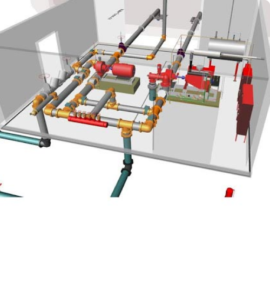Fire protection is a critical aspect of our everyday lives, yet it often goes overlooked until a crisis arises. While we regularly see fire service personnel responding to emergencies, there is a important network of fire safety professionals working behind the scenes to prevent these situations from happening in the first place. From carrying out fire risk assessments to establishing safety protocols, these unsung heroes play an indispensable role in protecting our homes, businesses, and communities from the danger of fire.
Comprehending fire safety is not just for those in the fire service profession; it is something everyone should take seriously. This article discusses the different components of fire safety measures, providing you with key tips for protecting your home and workplace. We will discuss crucial topics such as the importance of fire drills, common fire risks, and how to formulate an effective fire escape plan. Whether you are a business owner, a homeowner, or someone simply looking to increase safety awareness, these insights will help you get ready for potential emergencies and ensure that you are doing all you can to reduce fire risks.
Crucial Fire Safety Recommendations
Fire safety is essential in all residences and business. One of the first measures you can take is to make sure that you have operational smoke alarms installed in important areas, such as places where people sleep and passageways. Periodically test these alarms and swap the batteries at least once a year. Additionally, develop a fire escape plan that details the most efficient and safest routes out of your home or building. Make sure everyone knows what to do in case of an urgency, including designated meeting points outside the structure.
Another important aspect of fire safety is identifying and reducing common fire hazards. Check your plug sockets and appliances for signs of damage and avoid overextending circuits. Keep flammable materials, such as paper, cloth, and volatile substances, away from hot surfaces. In culinary spaces, always stay aware while cooking, and never leave cooking surfaces unattended, as fires in kitchens are among the top contributors of residential fires.
In conclusion, consider investing in fire safety equipment, such as fire suppression tools and fire blankets. Knowing how to operate these tools can save lives and belongings during a fire emergency. Frequently inspect your fire extinguishers to verify they are ready and accessible. Educate your family or staff about safe use and maintenance, including the best by dates. By following https://www.fire-safety-services.co.uk , you greatly reduce the risk of fire occurrences and enhance the safety of your surroundings.
Establishing a Flame Escape Plan
Creating a flame escape plan is vital for ensuring the safety of all individuals in your home or workplace. Begin by outlining the floor plan of your building, pointing out all exits such as doors and windows. Make sure to identify two ways out of each area, if viable. This visual map will help everyone comprehend the best paths to follow in the case of a fire, especially if the main egress is blocked or unsafe.
Once the paths are set, it is crucial to designate responsibilities to each person of the household or workplace. Designate someone to assist younger children, the elderly, or individuals with disabilities. Make sure that all individuals understands who will be in charge of checking whether everyone has securely left and where to meet outside. This meeting point should be a protected distance away from the building, allowing for accurate headcounts and safe observation of emergency services.
Frequently practice your fire escape strategy through drills to make sure everyone knows what to act when the alarm sounds. These drills not only strengthen the procedures but also assist spot any aspects for improvement in your plan. Adjust the evacuation routes and roles as necessary, especially after any changes to the building or family circumstances. Rehearsing these actions can create a considerable difference in reducing panic and disarray during an actual emergency.

Fire Safety Rules and Compliance
Fire safety guidelines are essential for guaranteeing the safety of lives and property in both private and commercial settings. Various organizations, including the National Fire Protection Association and the Occupational Safety and Health Administration, provide protocols that organizations and residents must comply with to remain compliant with applicable fire safety laws. These guidelines cover every aspect of fire safety, from setup and upkeep of fire alarms and extinguishers to performing regular fire drills and hazard analyses. Comprehending and abiding by these rules not only aids in steering clear of fines but also substantially minimizes the likelihood of fire-related accidents.
Compliance with fire safety standards necessitates regular evaluations and care of fire safety devices. Companies should establish a schedule to service fire extinguishers, smoke alarms, and suppression systems to ensure they are operating correctly. In also, organizations must educate their workers on how to respond to crises and use fire safety tools effectively. Maintaining accurate records of inspections, maintenance, and training courses is crucial, as this record-keeping demonstrates compliance and preparedness in case of an incident.
Inability to comply with fire safety regulations can result in serious consequences, including legal liability, increased insurance premiums, and damage to reputation. Moreover, a lack of following to fire safety regulations puts lives at risk, as it compromises the safety of workers, customers, and residents. Therefore, it is essential for both organizations and people to prioritize fire safety regulations, investing in required upgrades and participating in training and education to cultivate a atmosphere of safety.
